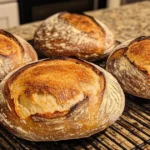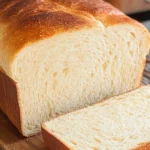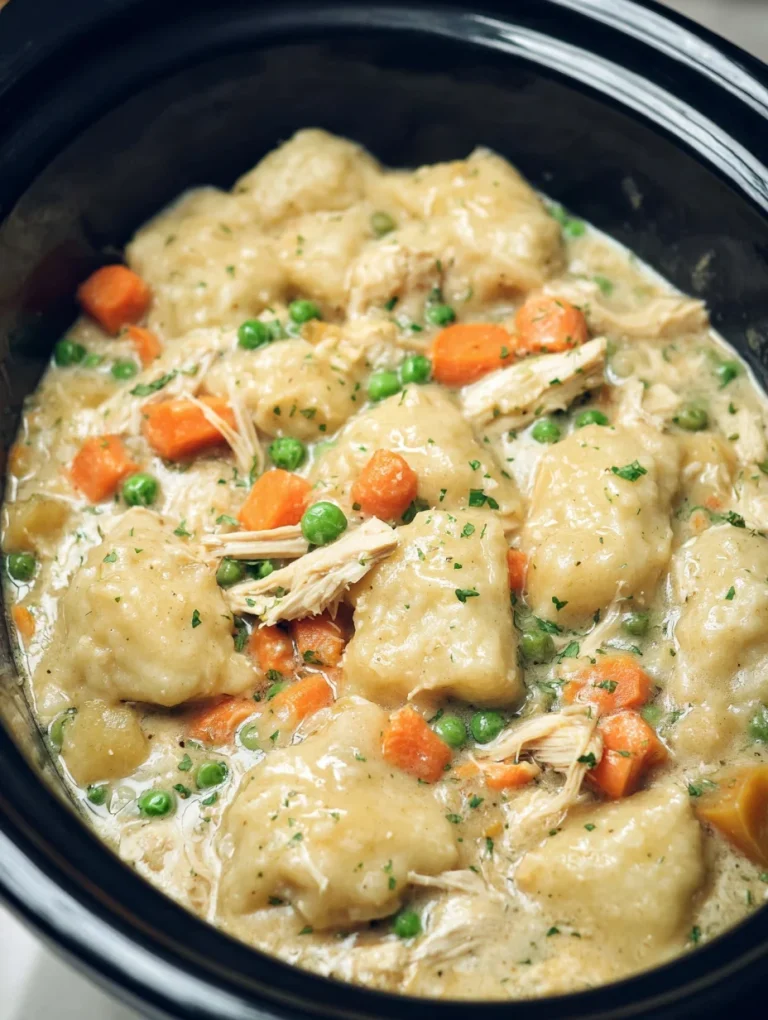Homemade hoagie roll recipe are a game-changer for any sandwich lover. These soft, light, and tender rolls have a subtle sweetness. This sweetness perfectly complements your favorite fillings without getting soggy. Whether you’re making classic subs, meatball sandwiches, or any other delicious creation, this easy-to-follow recipe will provide you with freshly baked hoagie rolls that rivals any bakery.
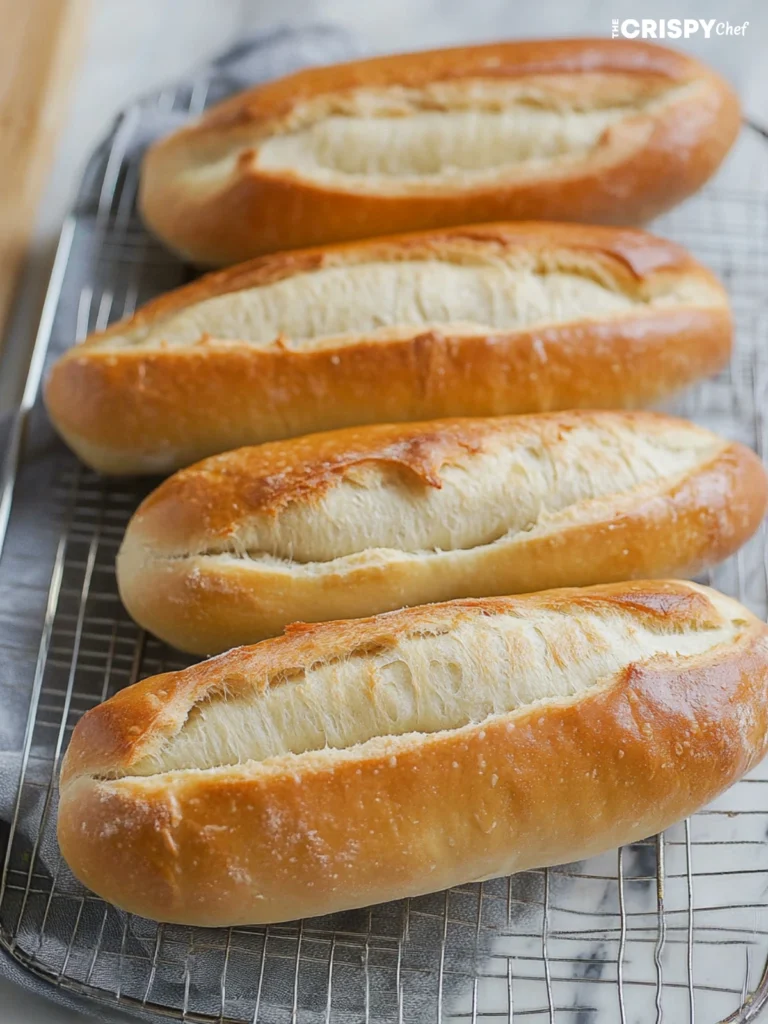
Key Takeaways
- Homemade hoagie rolls are soft, light, and tender with a subtle sweetness.
- The recipe uses simple ingredients and can be made using a stand mixer, bread machine, or by hand kneading.
- These rolls are ideal for classic subs, meatball sandwiches, or any filling of choice.
- The recipe yields 8 or 16 hoagie rolls, making it perfect for both small and large gatherings.
- Homemade hoagie rolls can be stored at room temperature for 5-7 days or frozen for up to 3 months.
Understanding Hoagie Rolls and Their Origins
The humble hoagie roll is a key part of Philadelphia’s sandwich scene. It started in the City of Brotherly Love in the mid-1900s. These long, flat rolls are now linked with the famous hoagie sandwich, known as subs, heroes, or grinders in different places.
History of Philadelphia-Style Hoagies
The term “hoagie” likely came from Philadelphia, but its exact start is unclear. One story says it was named by Al De Palma, a jazz musician and sandwich shop owner, during the Great Depression. Even though the exact origin is debated, one thing is sure: Philadelphians love their hoagies and the special rolls they use.
What Makes a Perfect Hoagie Roll
A recent survey found that 98% of Philadelphians think the hoagie roll’s soft inside and slightly hard crust are key. This texture comes from a special baking process. It makes the roll strong enough to hold the filling without being too dense.
Regional Names and Variations
While hoagies are closely tied to Philadelphia, the sandwich and its roll have spread nationwide. They’re known as subs in the Northeast, heroes in New York, and grinders in the West. The hoagie roll has become a key part of sandwich culture across the country.
Whether you call them hoagies, subs, or something else, the perfect hoagie roll is essential. It’s the base of a great sandwich experience.
| Regional Names for Large Sandwiches | Popularity (Google Trends) |
|---|---|
| Sub | Highest |
| Hoagie | Second Highest |
| Hero | Third Highest |
| Grinder | Fourth Highest |
“Hoagies likely originated from a jazz musician and sandwich shop owner, Al De Palma, during the Great Depression.”
Essential Ingredients for Perfect Hoagie Rolls
Making the perfect hoagie rolls begins with the right ingredients. These ingredients work together to give the bread its soft, chewy texture and delicious flavor.
Bread flour is key, with more protein than all-purpose flour. This means the hoagie rolls will have a chewier bite. Instant yeast makes the dough rise easily, skipping the need to mix yeast with water.
Sugar and honey add a hint of sweetness. Salt boosts the flavor and helps the dough develop. Vegetable oil makes the rolls soft and tender. An egg adds richness and fluffiness.
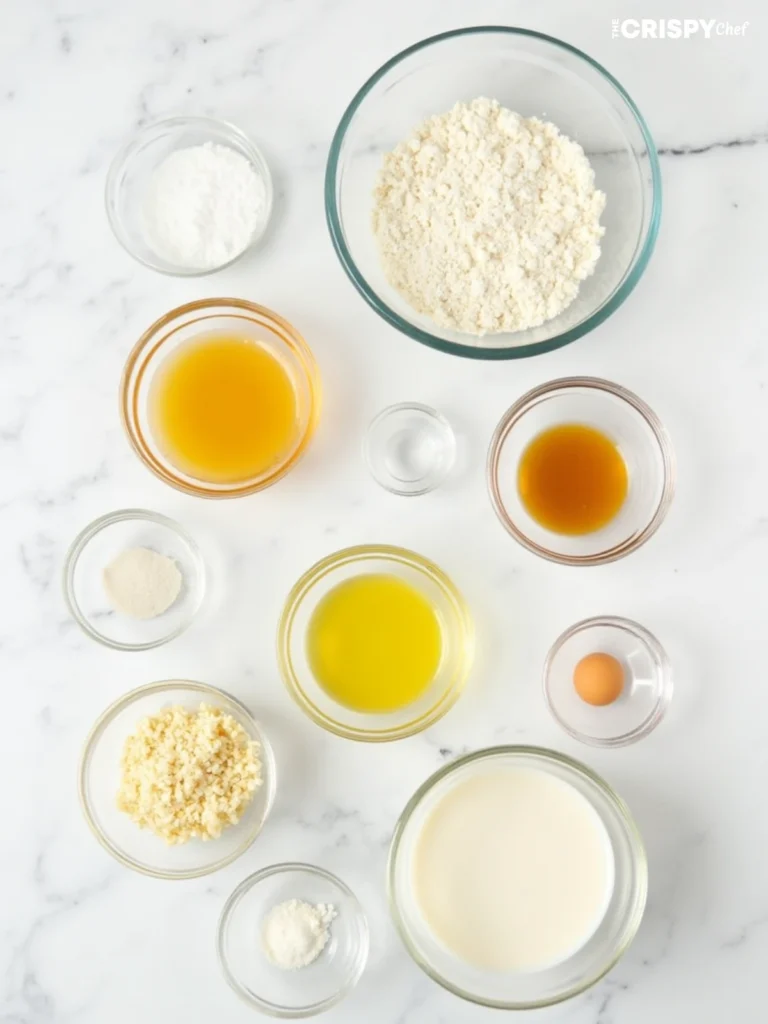
Finally, a bit of cornmeal on the baking sheet adds crunch. It also stops the rolls from sticking.
| Ingredient | Quantity | Purpose |
|---|---|---|
| Bread Flour | 400 grams | Provides structure and chewiness |
| Instant Yeast | 6 grams | Leavens the dough efficiently |
| Sugar | 0.5% | Feeds the yeast and adds subtle sweetness |
| Honey | Small amount | Enhances flavor and contributes to browning |
| Salt | Appropriate amount | Enhances flavor and strengthens gluten |
| Vegetable Oil | 10 grams | Adds tenderness and softness |
| Egg | 1 egg | Contributes to a lighter, fluffier texture |
| Cornmeal | Sprinkle | Adds crunch and prevents sticking |
With these ingredients, you’re ready to make hoagie rolls that will impress anyone. They’ll take you straight to Philadelphia’s heart.
Required Kitchen Tools and Equipment
Making tasty hoagie rolls at home needs some key baking tools and equipment. To get your homemade rolls just right, get these must-haves:
Must-Have Baking Tools
- Stand mixer with a dough hook attachment or a bread machine
- Large mixing bowl
- Kitchen scale for accurate ingredient measurement
- Plastic wrap or damp cloth for covering the dough during rising
- Baking sheet with a rim for creating steam in the oven
- Parchment paper for lining the baking sheet
- Pastry brush for egg washing the rolls before baking
Optional but Helpful Equipment
These extra tools aren’t necessary but can help a lot:
- Bread lame or sharp knife for scoring the rolls
- Cooling rack for allowing the baked rolls to cool properly
Mixing and Kneading Options
There are a few ways to mix and knead the dough. A stand mixer with a dough hook attachment is great. It kneads the dough well and saves time. Or, a bread machine can mix and knead everything, leaving you to shape and bake.
Having the right tools and equipment is key for making perfect hoagie rolls. Get these essentials, and you’ll be on your way to a delicious homemade meal.
Step-by-Step Hoagie Roll Recipe
Making homemade hoagie rolls is a fun baking adventure. Follow these steps to create delicious Italian-style bread for your favorite fillings.
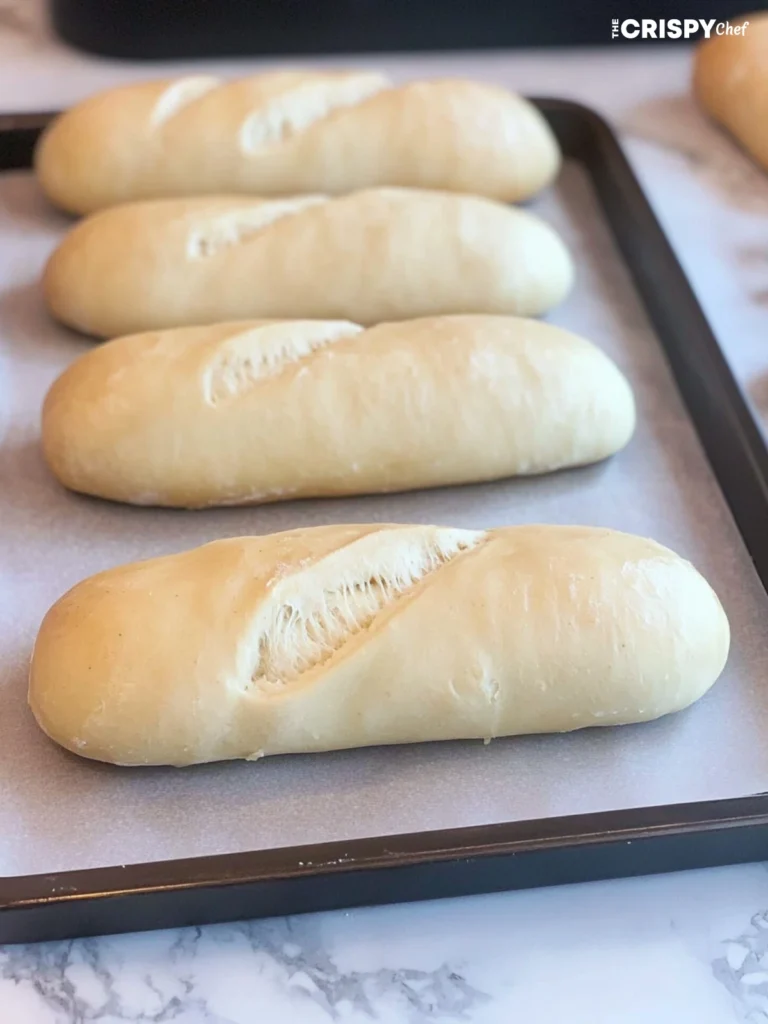
First, get all the hoagie roll instructions and bread-making steps ready. This recipe makes 6 rolls and takes about 2 hours and 10 minutes. It includes 1 hour and 30 minutes of resting time.
- In a big mixing bowl, mix 120 grams (1/2 cup) of milk, 55 grams (1/4 cup) of warm water, 1 large egg, and 2 tablespoons of melted butter. Whisk until everything is well mixed.
- In another bowl, combine 240 to 280 grams (2 to 2 1/2 cups) of bread flour, 2 teaspoons of vital wheat gluten, 5 grams (3/4 teaspoon) of salt, and 4.5 grams (1 1/4 teaspoons) of instant yeast.
- Add the dry ingredients to the wet mixture slowly. Stir until a shaggy dough forms. Then, knead the dough on a floured surface for about 10 minutes. It should be smooth and elastic. Do the windowpane test to check the gluten.
- Put the dough in a greased bowl, cover it, and let it rise for 1 hour and 30 minutes. It should double in size.
- Punch down the dough to get rid of air bubbles. Then, divide it into 6 equal pieces. Shape each piece into a smooth, oval roll. Place them on a parchment-lined baking sheet.
- Cover the rolls and let them rise for another 1 1/4 to 1 1/2 hours. They should puff up a lot.
- Preheat your oven to 375°F (190°C). Before baking, brush the rolls’ tops with a bit of melted butter.
- Bake the rolls for 18-20 minutes, until they’re golden brown. To make steam, place a shallow pan of hot water on the bottom rack.
- Take the rolls out of the oven and let them cool on a wire rack before serving.
Enjoy your homemade hoagie rolls with your favorite fillings and toppings. Their crisp crust and soft interior make them irresistible.
| Nutrition Facts (per serving) | Value |
|---|---|
| Calories | 220 |
| Fat | 6g |
| Saturated Fat | 3g |
| Carbohydrates | 33g |
| Fiber | 1g |
| Net Carbs | 32g |
| Sugar | 1g |
| Protein | 8g |
| Cholesterol | 43mg |
Mastering the Dough: Tips and Techniques
Making the perfect hoagie roll begins with knowing how to work with bread dough. It’s all about the right bread dough techniques and proofing bread skills. We’ll cover the basics of kneading methods and guide you through making the dough.
Understanding Dough Consistency
The perfect hoagie dough is slightly sticky but easy to handle. It should feel soft and stretchy. Make sure the dough is just right during mixing. It should pass the windowpane test, stretching thin without tearing.
Kneading Methods
- Hand Kneading: Knead the dough on a floured surface with your heel. This builds strong gluten and helps you feel the dough’s texture.
- Stand Mixer Kneading: Use a stand mixer with a dough hook for about 5-7 minutes. This makes the dough smooth and elastic.
- Bread Machine Kneading: A bread machine’s kneading cycle is great for sticky doughs. It’s easy and convenient.
Rising and Proofing Guide
After kneading, the dough needs two rises. The first is in an oiled bowl, and the second after shaping. Keep the dough warm, around 80-85°F, for good proofing bread. High-altitude bakers might need to adjust rising times or yeast.
| Preparation Time | 40 minutes |
|---|---|
| Rise Time | 2 hours |
| Servings | 4 sub buns |
“The secret to a perfect hoagie roll lies in the attention to detail during the dough-making process. Mastering the art of bread dough techniques, proofing bread, and kneading methods will ensure your homemade hoagies are truly exceptional.”
Shaping and Scoring Your Rolls
Making the perfect hoagie rolls is all about the details. The shaping and scoring process is key. Start by stretching the dough into oval shapes. Pull down the bottoms to make smooth tops and pinch the ends underneath.
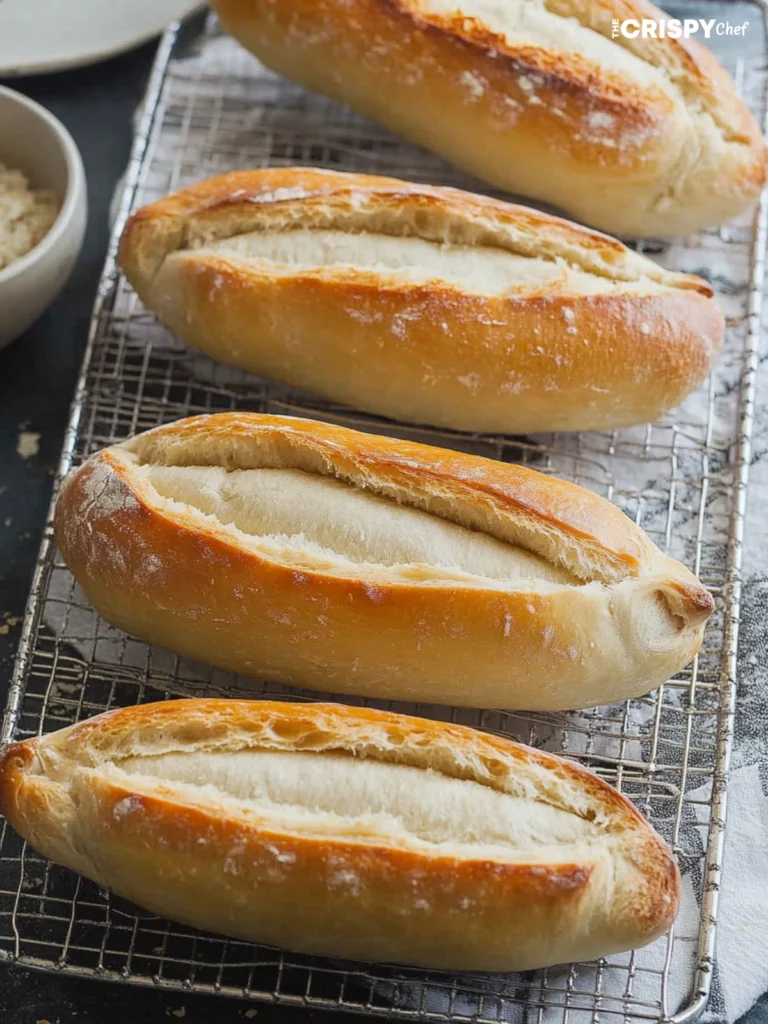
This helps keep the roll’s shape and ensures even roll formation.
After shaping, it’s time to score the rolls. Use a sharp knife or bread scoring blade for shallow slashes across the top. This scoring bread technique makes the rolls look better and helps them expand and get a nice crust during baking.
For even results, weigh your dough before shaping. This step helps make uniform roll sizes. It ensures they bake evenly and look professional. Remember, handle the dough gently to keep its delicate structure.
Mastering shaping and scoring will help you make authentic, Philadelphia-style hoagie rolls. Take your time and let the dough guide you. This way, you’ll create delightful homemade treats.
Baking Secrets for Professional Results
To get a golden, crispy crust and perfectly baked hoagie rolls, you need to master a few techniques. These will help you make your homemade bread as good as the bakery’s.
Temperature and Timing
Bake your hoagie rolls at 425°F (218°C) for 15-19 minutes. This high heat creates a great crust and cooks the inside just right. Watch the rolls closely in the last few minutes to avoid over-browning.
Steam and Crust Development
Creating steam in your oven is key for a professional crust. Pour hot water onto a metal baking sheet or cast-iron pan on the bottom rack. This steam makes the rolls’ crust shiny. For an even shinier crust, brush the rolls with an egg wash before baking.
Rotate the baking tray halfway through baking if your oven has hot spots. This ensures even browning. The rolls should sound hollow when tapped, showing they’re perfectly baked.
“Mastering the art of baking homemade hoagie rolls is all about controlling the temperature and creating the perfect steam environment. With a few simple tricks, you can achieve a professional-level crust that will impress your friends and family.”
Storage and Freezing Methods
After baking your hoagie rolls, it’s key to store them right to keep them fresh. They stay good for 5-7 days at room temperature. Just wrap them in an airtight bag or container. If you want to keep them longer, freeze them for up to 3 months.
To freeze, let the rolls cool down completely. Then, wrap each one in plastic wrap or foil, or put them in a freezer-safe bag. This keeps them from getting freezer burn and keeps their taste and texture. Just thaw them at room temperature when you’re ready to eat.
For the best taste, eat your hoagie rolls within 2 days. This way, you get the best flavor and texture. With the right storage, you can enjoy these rolls for days.
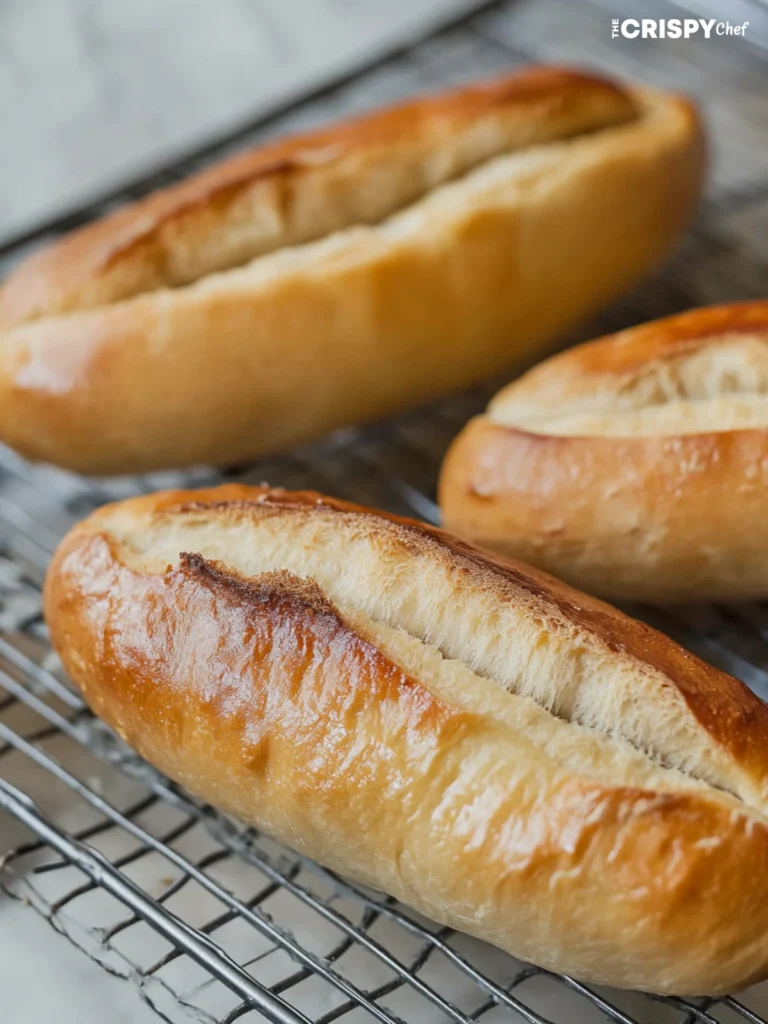
FAQ
What is the difference between a hoagie roll and a sub roll?
A hoagie roll is typically softer and denser than a sub roll, which has a crustier texture. The difference lies in the baking process and regional preferences for bread styles.
What kind of bread is a hoagie roll?
A hoagie roll is a long, soft bread made from white flour, often slightly chewy, and designed to hold hearty fillings like meats, cheeses, and vegetables for sandwiches.
What is the best bread for sub sandwiches?
The best bread for sub sandwiches is sturdy yet soft, such as Italian or French rolls, to support heavy fillings while remaining easy to bite through.
What is a classic hoagie?
A classic hoagie includes cold cuts like ham, salami, or turkey, topped with lettuce, tomato, onion, cheese, oil, and vinegar on a hoagie roll.
What is the difference between American hoagie and Italian hoagie?
An American hoagie uses deli meats like turkey or roast beef, while an Italian hoagie features cured meats like salami, capicola, and prosciutto, with different seasoning profiles.
What is a godfather hoagie?
A godfather hoagie is a hearty sandwich featuring layers of Italian meats, cheeses, lettuce, tomatoes, onions, and robust seasonings on a hoagie roll, often associated with Italian-American cuisine.
What makes homemade hoagie rolls soft, light, and tender?
Homemade hoagie rolls are made with simple ingredients. These include bread flour, instant yeast, sugar, honey, salt, and vegetable oil. This mix creates soft, light, and tender rolls. They are slightly sweet and can hold flavors well without getting soggy.
Where did hoagie rolls originate?
Hoagie rolls started in Philadelphia in the mid-1900s. They are long, flat rolls for sandwiches, known as subs, heroes, or grinders in different places.
What are the key ingredients for making the perfect hoagie roll?
To make perfect hoagie rolls, you need bread flour, instant yeast, sugar, honey, salt, and vegetable oil. Bread flour makes them chewy. Instant yeast saves time. Vegetable oil makes them soft and tender.
What essential tools are needed to make homemade hoagie rolls?
You’ll need a stand mixer with a dough hook or a bread machine, a large mixing bowl, and a kitchen scale. Also, plastic wrap or a damp cloth, a baking sheet, parchment paper, and a pastry brush. A metal baking sheet with a rim is key for steam in the oven.
What are the key steps in the homemade hoagie roll recipe?
The recipe involves mixing ingredients, kneading the dough, and letting it rise twice. Then, shape the rolls and bake with steam. The dough should pass the windowpane test. Brush with butter before baking for a crispy crust.
How do you achieve the perfect dough consistency for homemade hoagie rolls?
The dough should be slightly sticky but easy to handle. Knead by hand, with a stand mixer, or in a bread machine. It should pass the windowpane test. Two rises are crucial: one in a bowl, the second after shaping.
How should you shape and score the homemade hoagie rolls?
Stretch the dough into oval shapes, pull down the bottoms, and smooth the tops. Pinch the ends underneath. Score the top with a knife or blade before baking. Weighing the dough helps get even sizes.
What are the secrets to baking perfect homemade hoagie rolls?
Bake at 425°F for 15-19 minutes. Create steam by pouring water on a metal baking sheet. Brush with an egg wash for a golden shine. Rotate the tray halfway for even cooking if your oven has hot spots.
How should you store and freeze homemade hoagie rolls?
Store rolls at room temperature for 5-7 days in a zip-lock bag. Freeze for up to 3 months in a freezer bag. Thaw frozen rolls at room temperature before serving for best results.

Homemade Hoagie Rolls
Equipment
- Stand mixer with dough hook or bread machine
- Large mixing bowl
- Kitchen scale
- Plastic wrap or damp cloth
- Baking sheet with rim
- Parchment paper
- Pastry brush
- (Optional) Bread lame or sharp knife, cooling rack
Ingredients
- 400 grams bread flour
- 6 grams instant yeast
- 2 grams sugar
- 1 tablespoon honey
- 5 grams salt
- 10 grams vegetable oil
- 1 large egg
- 1/2 cup milk
- 1/4 cup warm water
- Cornmeal for sprinkling
Instructions
- In a large bowl, mix milk, warm water, egg, and melted butter. Whisk until combined.
- In another bowl, combine bread flour, vital wheat gluten (optional), salt, and instant yeast.
- Gradually add dry ingredients to the wet mixture. Mix until a shaggy dough forms.
- Knead the dough for 10 minutes until smooth and elastic. Perform a windowpane test to check gluten development.
- Place the dough in a greased bowl, cover, and let rise for 1 hour and 30 minutes, or until doubled in size.
- Punch down the dough and divide it into 8 equal pieces. Shape into smooth, oval rolls.
- Place rolls on a parchment-lined baking sheet. Cover and let rise for 1 hour and 15 minutes.
- Preheat oven to 375°F (190°C). Brush tops with melted butter or egg wash.
- Bake for 18-20 minutes until golden brown. For a shiny crust, create steam by placing a shallow pan of hot water in the oven.
- Cool rolls on a wire rack before serving.
